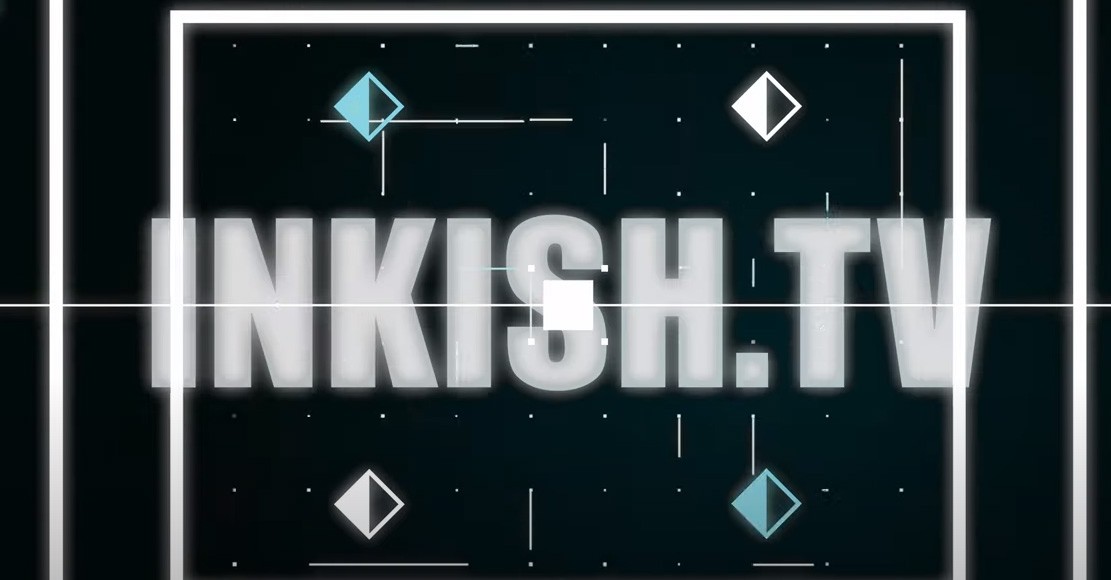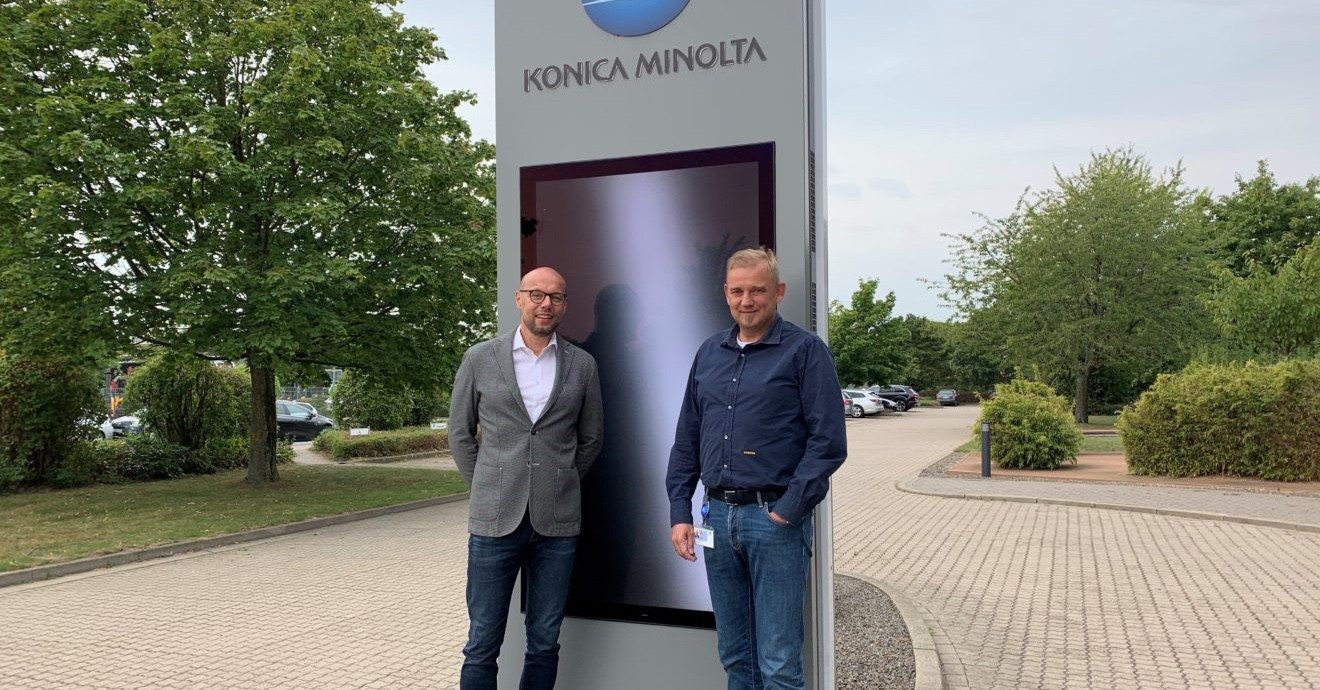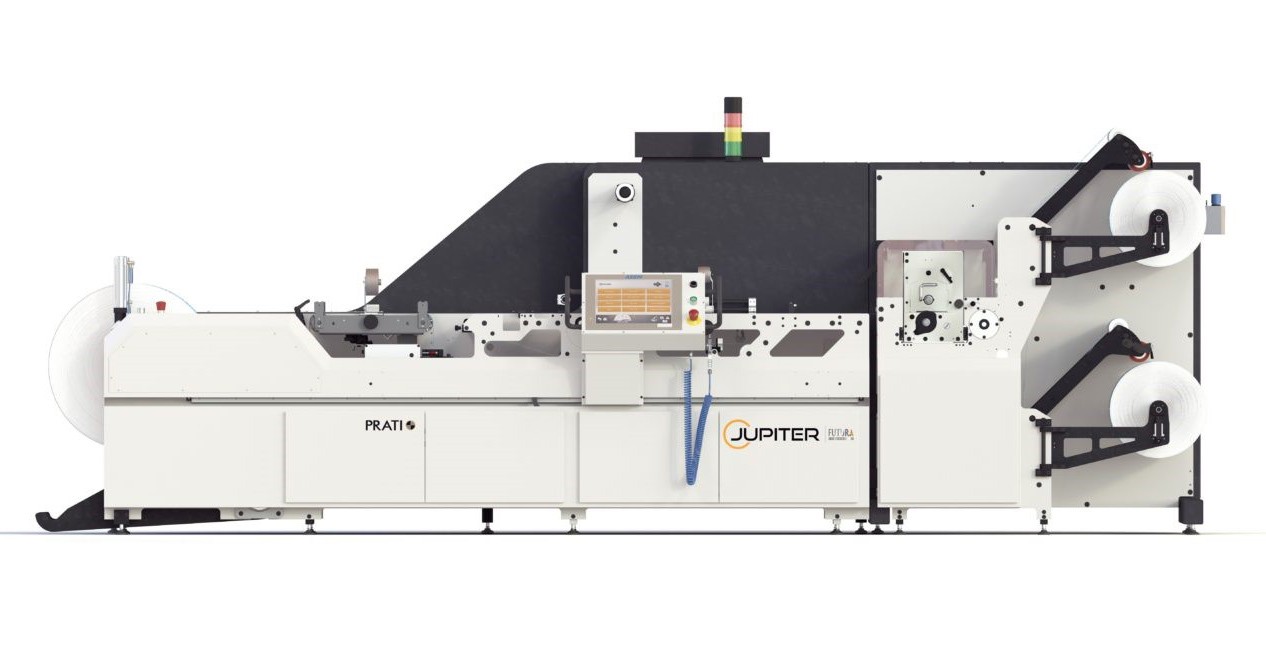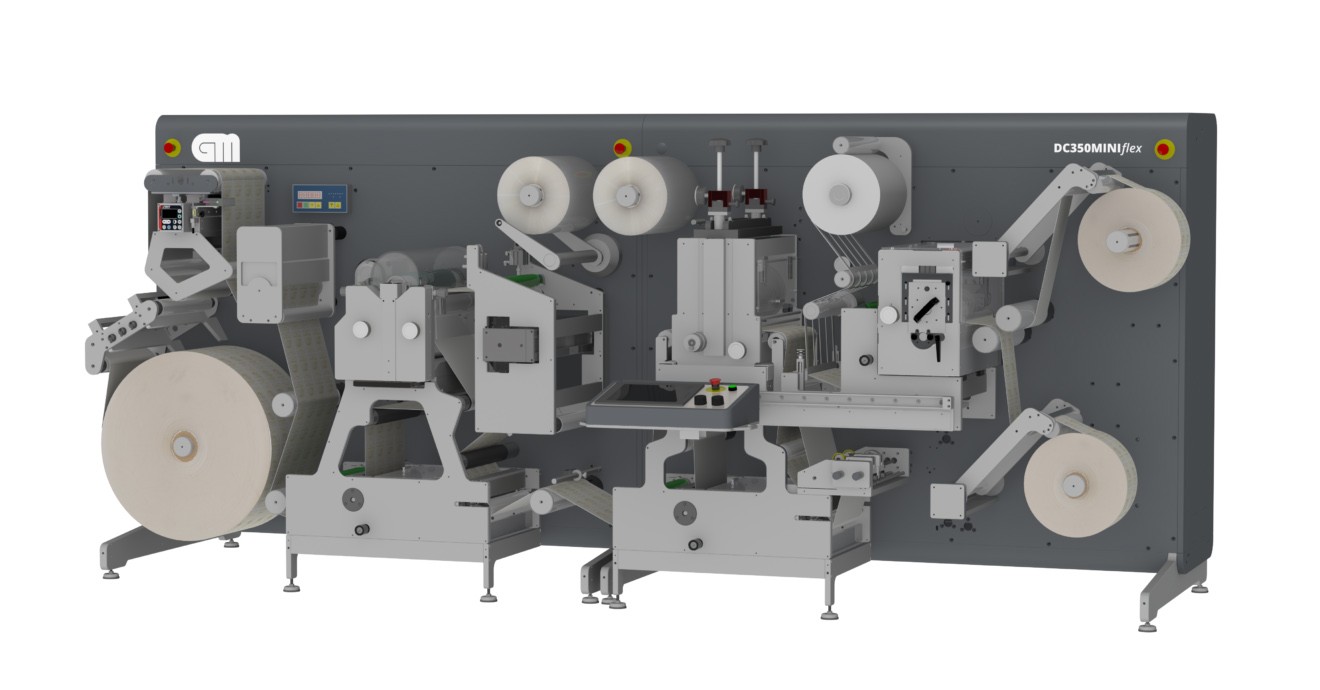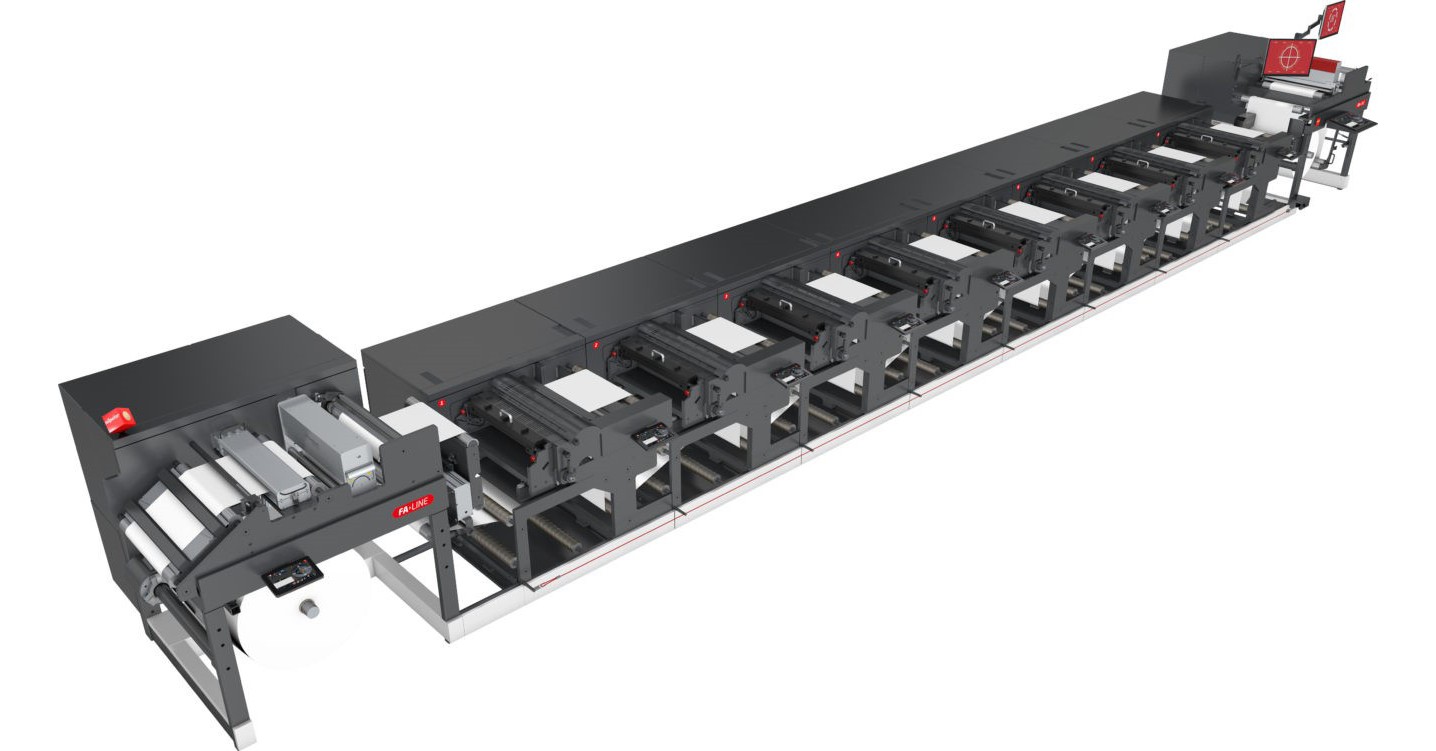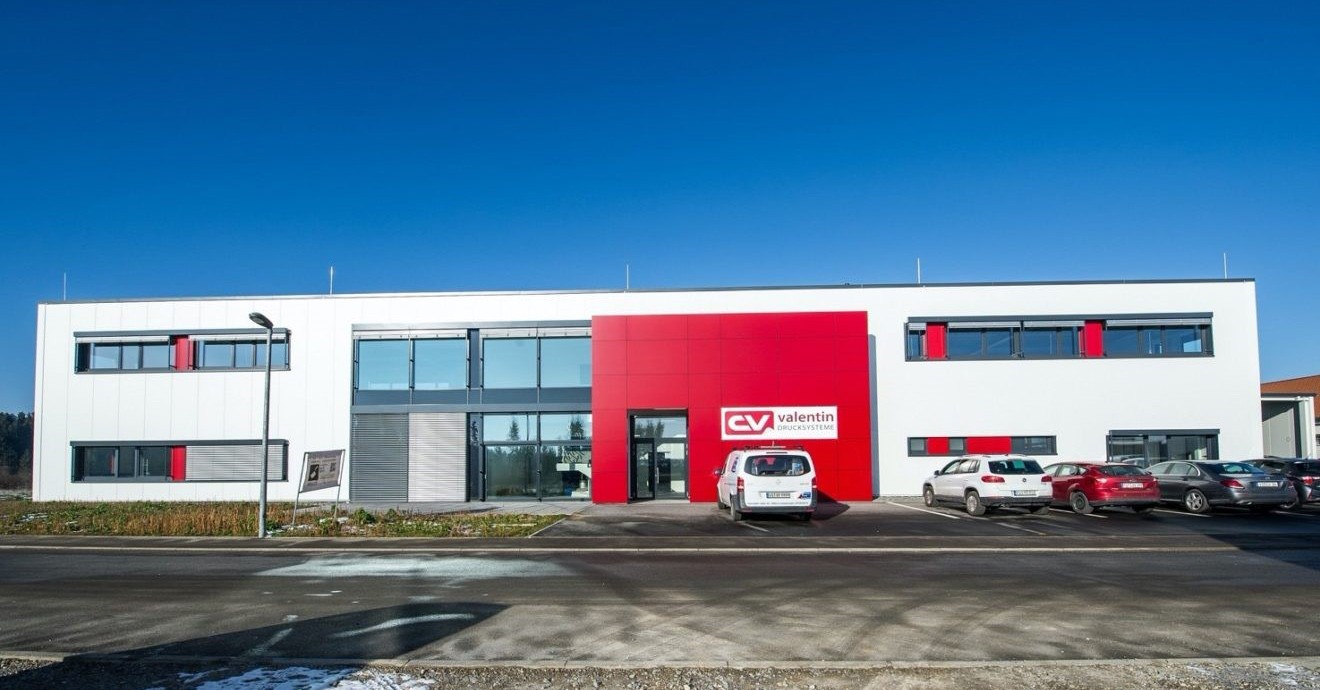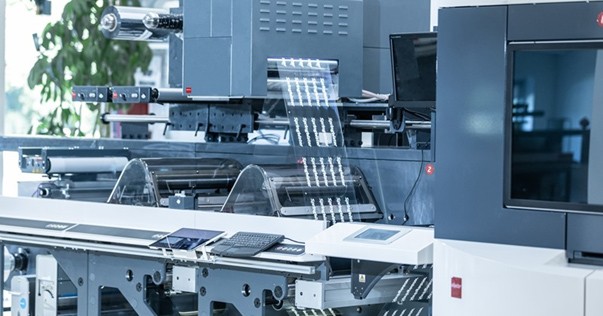Printing technology
GM - Interview with Uffe Nielsen (INKISH)
"We adapt basic models to the needs of our customers." - Uffe Nielsen, Director Grafisk Maskinfabrik (GM) in an interview with Morten B. Reioft of the online trade portal INKISH.
More information about the company is available on "GM-Tech Talk," a YouTube channel that clearly demonstrates technical aspects of GM's finishing and processing machines. The channel builds on the many years of experience of Uffe Nielsen, CEO of Grafisk Maskinfabrik A/S and his technical team. It not only presents machines, but also discusses general technical issues related to the finishing of labels and flexible packaging.
Nilpeter GmbH and Konica Minolta agree on partnership
It is always important to us to offer our customers and partners qualified advice and the right product for their requirements. We are pleased to announce the cooperation with our future partner, Konica Minolta Business Solutions Deutschland GmbH. With the expansion of our product portfolio, we are now able to offer our customers a high-quality product as an entry into the increasingly growing digital market with the AccurioLabel 230.
The toner-based label printing system was developed and manufactured in Europe together with the Danish company Grafisk Maskinfabrik (GM). The press is based on Konica Minolta's AccurioPress technology and is designed for short and medium runs. The system is ideal for label printers entering the digital printing market or as a complement to existing digital printing systems. The AccurioLabel series from Konica Minolta is in demand throughout Europe and has already been sold more than 500 times.
Nilpeter GmbH and Konica Minolta already cooperated successfully last year in the service of GM (Grafisk Maskinfabrik, a partner of Nilpeter GmbH) finishing systems on the Konica Minolta production line. As of September 1, 2020, a comprehensive partnership in sales and service between the two companies for Germany and Austria has now been agreed upon in order to meet increasing customer requirements even better.
"The partnership with Nilpeter GmbH enables us to take a sustainable and strategic step into the label market. With the company we have a strong partner that is well-known and continuously represented in the market. We are looking forward to working with them," says Oliver Becker, Head of Professional Printing at Konica Minolta Germany.
We are thus consistently pursuing the path we embarked on some time ago - strengthening our local service, product and sales competence through our own employees, partners and market-oriented products. We will continue this development in the long term through a variety of organizational and operational measures, also and especially in times of Corona, to provide regional support for our customers.
Photo: Thorsten Saathoff, Managing Director of Nilpeter GmbH (left) and Oliver Becker, Head of Professional Printing at Konica Minolta Germany (right)
PRATI - Label meets flexible Packaging
It is no longer a secret that the two areas of label and flexible packaging are increasingly merging. The current Prati technology supports this trend.
Experienced label printers have long been trying to establish themselves in the field of flexible packaging. Against the background - even there - of ever smaller job sizes, shortest product life cycles and increased cost pressure, fast set-up and maximum flexibility are becoming more and more important in this area. Classic packaging printers are also increasingly interested in compact technical solutions for ever smaller job sizes.
Constantly growing demand
As a logical consequence, a constantly growing demand for this area of finishing is developing among manufacturers of conversion machines. With the further development of the Jupiter series, the Italian manufacturer Prati has developed a machine that specifically meets these requirements and can also be ideally used as a finishing system for checking, cutting and winding labels. "It is remarkable how the number of projects in this market segment has increased over the last 2-3 years. It helps when your own machine supplier takes this growth into account by developing machines designed specifically for this purpose. The two web widths 630 and 670 mm, the fully integrated 1100 mm unwind and 800 mm rewind clearly show that this machine was developed for the flexible packaging sector. The fact that the developers were also looking for higher mileage is underlined by the maximum production speed of up to 400 m/min.
Equipped with computer intelligence
In order to be able to use these high speeds in practice, the press was equipped from the outset with the necessary computer intelligence to be able to communicate with all the usual manufacturers of workflow providers. The machine only stops to eliminate or correct predefined errors. This method of operation ensures maximum accuracy and reproducibility and the production process is not interrupted unnecessarily.
With integrated camera system
This task can, as is common for many users, also be performed by means of a built-in camera system. The machine is designed in such a way that even at top speed there is enough "braking distance" to position each defect precisely in the desired repair area. In addition to a "normal" splice table - as we know it from label production - the Jupiter can optionally be equipped with a vacuum table for this splice area. This makes it easier for the machine operator to splice the thinnest films and ensures a high level of process reliability.
Precise and fast cutting technology
In addition to a slide-out knife cassette with shear and razor blade knives, there is also the proven Fastcut system, in which up to 18 knives are positioned within seconds and, above all, securely with a highly accurate linear spindle. This technology is becoming more and more a "state-of-the-art" technology and offers a multitude of advantages. The Prati Jupiter can also process multi-substrates from 12 to 450 µm. To be able to process this wide variety of materials safely, not only a sophisticated servo technology but also the most difficult voltage control is required. Even the standard model of the machine is supplied with friction shafts to ensure that the various requirements for different voltage settings for thin mono materials, SK labels and clear-on-clear labels can be met.
Cutting the thinnest webs
An important aspect is to be able to separate also during the winding process. This is why it is possible to process webs separately from each other without the risk of telecopying by means of dual winding and pneumatically controlled loading arms. The rewind area is rounded off with a "2-spindle carousel". Here, secured by a laser safety barrier, the possibility is created to work as with a 2-spindle turret. This means that despite the separation of the rewind on 2 spindles, the advantages of a 2-spindle turret are not lost.
Prati Jupiter 630/670 - Technical data
Max. recommended working width: 630/670 mm
Min. material width: 300 mm
Maximum speed as slitter rewinder: 400 m/min (depending on job)
Ø unwind shaft: 76 mm
Ø unwinding max.: 1100 mm
Ø max. take-up diameter upper take-up shaft: 800 mm
Ø max. take-up diameter lower take-up shaft: 800 mm (optional)
Equipment: Integrated roll lifter, friction shafts, dual rewind, vacuum splice table, automatic knife system, 2-spindle turret
GM - The little finishing sister - GM DC350Miniflex for the entry
The presentation of the new DC350Miniflex in April 2020 by the Danish Grafisk Maskinfabrik A/S (GM) is a good reason to introduce the "little" sister of the DC350 with its options and possible uses for a wide range of applications.
The new DC350Miniflex from Grafisk Maskinfabrik A/S is a compact alternative to the DC350 and a further development of the DC350Mini. This new introduction to GM's portfolio with its wide range of options thus joins the DC350 family.
Cost-effective alternative
GM is thus consolidating its position in the premium segment and offers a cost-effective alternative to the well-known DC350. The line has been designed according to the latest technological and ergonomic aspects and meets the industry standard 4.0. Also available as DC350Miniflex with an extended web width of 550 mm. The basic machine is already equipped with a semi-rotary die-cutter, Flexi printing unit (optional semi-rotary) for applying varnish, dual winding and VPN gateway for remote maintenance of the DC via a secure internet connection. The compact design in comparison to its "big" sister, the DC350, makes the solution attractive for companies with a small footprint who at the same time do not want to compromise on equipment and functionality.
Standalone or integrated
The new DC350Miniflex can be configured as a stand-alone press and as an integrated postpress ("inline") for all common digital presses. Here too, GM has gained experience through cooperation with manufacturers of digital printing solutions and is in close contact with its customers to continuously improve products.
Modules for diverse applications
A major advantage of the new solution is the many expansion possibilities offered by the open and modular concept. SmartLam is an option for producing multilayer labels (multilayer labels) in the DC. Efficient production of these products requires either a "crossover" unit in the press or lamination of two pre-printed webs in register. The advantage of lamination is that the full web width can be used, doubling production capacity, but also allowing labels to be produced in larger formats. During the production process, up to 72 m/min two webs are laminated in register using servo control. SmartSlit is a fully automatic knife system to reduce makeready times and to precisely adjust the knife unit to the substrate. Not only the fast adjustment of the knives, but also the accuracy provide production reliability, time savings and higher quality. The SmartFlexo flexographic printing unit is based on the company's "Flower" concept and enables register-accurate spot coating for pre-printed material. It is available in both full-rotary and semi-rotary versions. SmartStrip is a modified servo-controlled waste-matrix contact take-off system that ensures continuous tension and thus avoids production interruptions due to web breaks in the matrix. SmartLoad is a semi-automatic die plate change as another automation "tool" from GM (DC350 only). SmartTurret offers customers the ability to produce short runs efficiently with an automatic 2-spindle turret without the significant production stops associated with alternative systems. WebAdvance stands for fast roll change with single-spindle turret rewind. The cut webs are held during the reel change. These can be tied precisely and quickly to the new core. DoubleSpeedDie is the latest development from GM for a very fast die cutting process with up to 140 m/min in the semi-rotary production process (DC350 only). In the meantime, the first customers in Germany have already decided to use the new DC350Miniflex. A user report will follow.
Details about YouTube
With the new DC350Miniflex, GM has a good addition to its portfolio. The compact design and available options for a wide range of applications alone create a wealth of opportunities for the company and its customers. For more information, visit the "GM Tech Talk", a new YouTube channel that clearly demonstrates technical aspects of GM's finishing and converting machines. The channel builds on the long experience of Uffe Nielsen, CEO of Grafisk Maskinfabrik A/S and his technical team. The channel not only presents machines, but also discusses general technical issues related to finishing of labels and flexible packaging.
GM DC350Miniflex - Technical data
Modern platform concept with high flexibility
Maximum web width (DC350): 350 mm
Minimum web width: 50 mm
Winding diameter: 2 x 700 mm
Speed: Up to 72 m/min (140 m/min)
Operation: To
NILPETER - FA-26 - The step into the market for flexible packaging
The latest and widest press developed by Nilpeter is the 670 mm wide FA-26, which represents the company's entry into new markets.
According to Nilpeter, it offers new standards in terms of flexibility, sustainability, fast job changes and full automation - and is set to set new standards for presses in the industry. It is now also set to set new standards for conventional flexible packaging in the wider web segment, where job changes are traditionally more time- and cost-intensive.
With the new FA-26, we are able to offer high-quality flexographic printing - UV-, solvent- or water-based, combined with many inline finishing processes - on a variety of new substrates. And this includes recyclable and biodegradable plastic substrates. The flexibility of the new FA-26 allows the processing of newly developed substrates as well as conventional substrates combined with various lamination technologies - enabling different lamination systems to create recyclable packaging applications.
The printing world is rapidly evolving in a direction where sustainability is as important as cost or technical features. Inline printing and processing, and thus limiting waste, opens up new opportunities for both label printers and flexible packaging converters to offer short-run, value-added flexible packaging products.
Nilpeter sees the new FA-26 as a cornerstone in the product range that offers a much-needed alternative to traditional flexible packaging printers and label printers in the development of innovative and sustainable packaging solutions. This was already evident after the smooth introduction at LabelExpo Europe 2019, where the company showed a single FA-26 printer that attracted a lot of interest. Since then, numerous trials have been carried out with several print shops and the results have, according to the company, exceeded expectations, especially those of existing and potential customers in terms of fast job changes and very low waste. According to Nilpeter, the FA-26's low TCO is impressive and the first jobs are already on the books.
The press has also attracted new technological developments from OEMs in the flexible packaging sector. The ability to print and produce a fully functional laminate inline using dry solvent lamination or e-beam is in demand in the market. The E-Beam enables instant cure PET/PET lamination - a recyclable design for flexible packaging - which is made possible by the high accuracy in manufacturing and the accurate and automatic storage and recovery of process parameters.
Prati - Carl Valentin GmbH has successfully put the first Prati machine into operation
Carl Valentin celebrated the 100th anniversary of the company in 2018. 100 years, a strong number, an impressive success story that starts in April 1918. What began in 1918 as a label factory has developed into one of the leading manufacturers of labeling systems.
Today the whole world prints with solutions from Carl Valentin. More than 70,000 systems are currently in use around the world, and the traditional company is successfully on the move with sales partners around the globe. With a label production, extensive accessories and suitable software solutions, Carl Valentin is considered a worldwide full-range supplier - to this day - in family hands. Meanwhile the management of Carl Valentin GmbH is in the hands of the managing director Erwin Tisler.
The course for the future is set - for further growth!
In 2018 the company decided to build a new building to expand office and production space. The increasingly important area of label production is to be expanded with this. The new building will be ready for occupancy at the end of 2019 and the first machine to be installed in the new production hall will be the brand new PRATI Saturn die cutter!
Carl Valentin produces adhesive labels and mono materials from blank to 4-color UV flexo printing at the Dauchingen site. The further processing to any desired finishing will be done in the future, among others, with a new PRATI Saturn machine in 400mm working width, equipped with a die cutter, the fully automatic knife positioning unit "Fast Cut" as well as a semi-automatic dual turret with automatic knock-off at the end of the count.
Thus, optimal conditions for increasing productivity have been created. "The management of Carl Valentin GmbH is already considering the purchase of a second PRATI Saturn," comments Eberhard Hauser - Technical Director of Carl Valentin GmbH.
On behalf of Nilpeter GmbH, Christoph Kugler, sales representative of Nilpeter GmbH for the area of Southern Germany, comments: "We are pleased about the trust placed in Carl Valentin GmbH and are proud to be able to participate in this success story in the future and to be able to further expand the partnership in the near future.
Nilpeter - Digital Inline Print Finishing
The new 'High Build' coating and 'High Opacity White' inkjet units open up a wide range of design options and offer perfect conditions for the requirements in the health, personal care, wine and spirits sectors, to name but a few areas of application.
Integration and retrofitting in Nilpeter presses
The Nilpeter digital inline print finishing supports a wide range of substrates such as PP, PE, PET and film and can be variably positioned in a machine configuration. These Nilpeter inkjet modules offer a unique opportunity to combine and match proven analog printing technology with specifically applied digital inkjet printing processes.
High-Laydown' technology for coating applications
HL technology can be used to generate high-quality surface structures that simulate expensive substrates, highlight expressive designs or offer a special feel. HL technology can be combined with matt "floodcoat" varnish to create microembossing techniques used in paper production or embossing effects applied digitally to text or image details.
For an additional effect, extraordinary foil effects can be achieved in combination with lamination/foil unwinding.
High Opacity White' Technology
The 'High Opacity White' inkjet unit achieves high opacity white with low overall production costs, low waste and short makeready times. It also makes your print products more attractive without additional costs for screens, printing plates or similar.
Increased production rates
Compared to conventional methods, digital inline inkjet finishing units offer shorter delivery times for highly finished jobs. The greater flexibility generates economic benefits without compromising quality. Less waste, faster makeready times and no additional tooling costs enable higher production rates and lower overall production costs.


